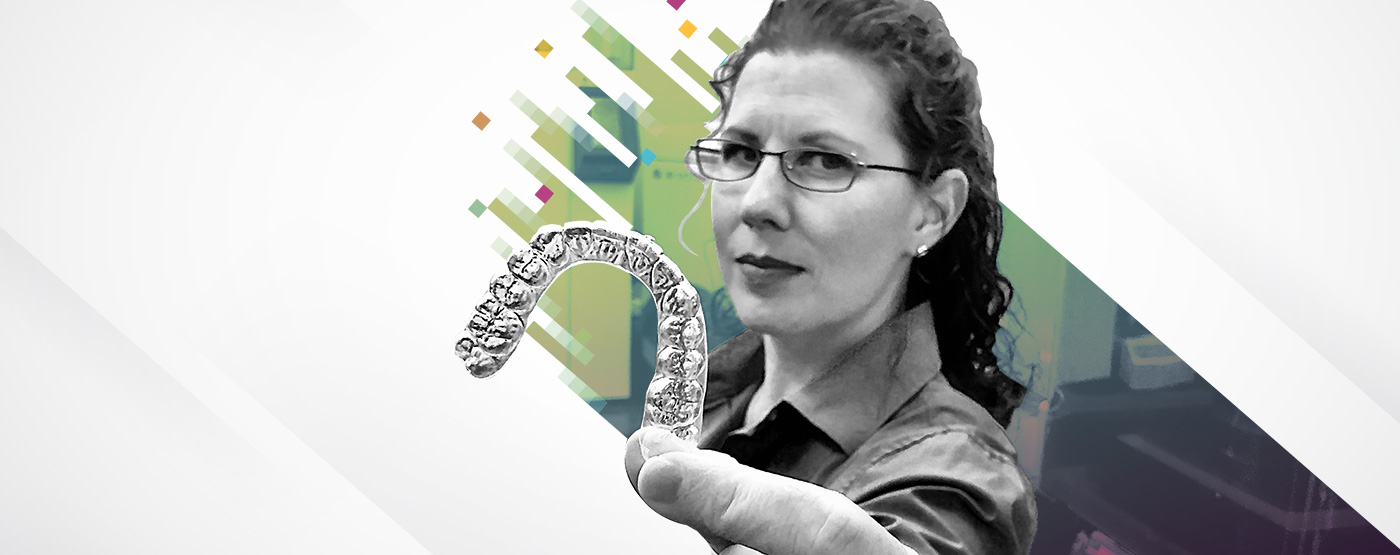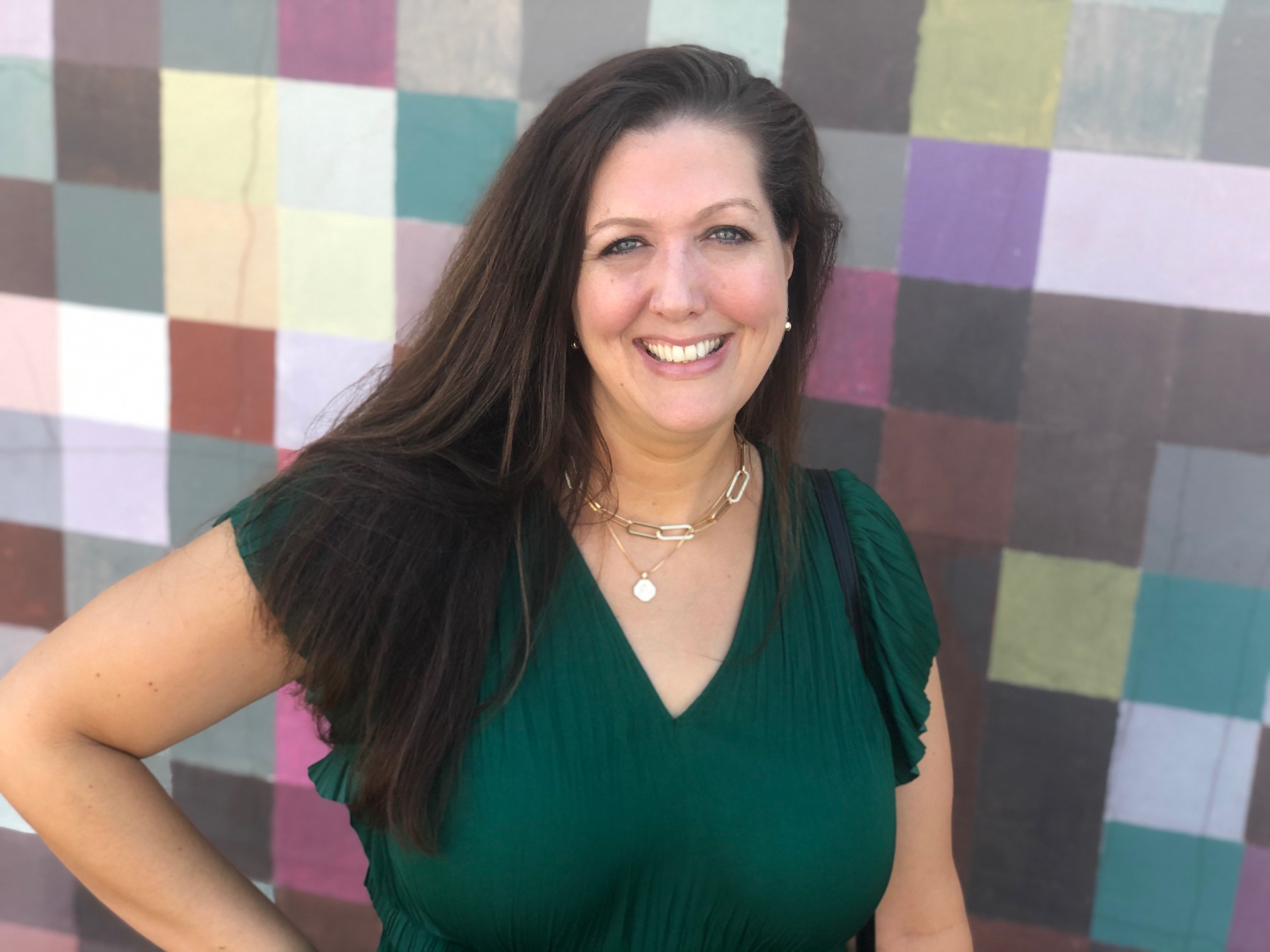Unapologetic: Owning Success in Orthodontics

If you’re active within orthodontic communities on social media, you may have seen posts from Melissa Shotell, DMD, MS (she’s AlignerBee on Facebook and Instagram) extolling the benefits of aligner therapy, providing reviews on printer materials and sharing tips on how to use orthodontic imaging software. She is also an outspoken advocate on the topic of gender equality in the field of orthodontics—a surprising ongoing issue, given that women represent 50 percent of dental school graduates today.
As part of Carestream Dental’s commitment to recognizing women who are shaping the industry, we met with Dr. Shotell to learn more about her career, issues that exist within orthodontics and how we can all work together to make changes in the field.
Entering Orthodontics
While dentistry may not have been the family business for Dr. Shotell, one early experience taught her the power dental professionals can have to change lives.
“I was very fortunate when I was young to be exposed to dentistry very early,” says Dr. Shotell. “I was actually treated by a pediatric dentist instead of a family dentist, which is pretty unique just because of where I grew up.”
After her pediatric dentist identified the need for orthodontic intervention, Dr. Shotell began receiving complex interdisciplinary treatment from the ages of 9 to 15. This sparked a fascination in the power of what dentistry could achieve, leading Dr. Shotell to attend dental school at Nova Southeastern University and follow up with a GP residency at Ohio State.
Dr. Shotell began her career as a GP in an interdisciplinary practice, where she worked closely with an oral surgeon and orthodontist. This work, along with her personal experience as a child, led to her decision to return to school (Loma Linda University) and pursue a path in orthodontics.
Upon completing her orthodontic program, she and her husband (Michael Scherer, DMD, MS) purchased a GP practice—a few hours east of San Francisco—where Dr. Shotell planned to do all the orthodontic interdisciplinary care. Today, however, she has grown it into her own practice; one that is focused on using the latest technology to provide superior patient care.
“In this area, we’re far away from a laboratory, as well as any radiographic or intraoral scanning services,” says Dr. Shotell. “So, I brought those into my office to really have the best advantage for my practice and for treating my patients.”
Recognizing Challenges
Orthodontics has slowly shifted in terms of demographics. As one of only two female residents in her orthodontics program, Dr. Shotell was saddened to see no female representation in other university residency programs. Even today, she sees many opportunities for universities to include females in faculty positions.
“In both of my residency programs, there was definitely an absence of female faculty, and I think that that's really the next step for the profession is for women to be involved in education and bringing the next generation forward.”
Unfortunately, this question of gender equality extends beyond the classroom and into the real world. Dr. Shotell recently shared an experience via social media demonstrating how male doctors are often treated with more respect in their position.
Someone working on an R&D project for a dental company asks me for one hour of my time to help them with ideas on their project. This same person asks my husband for one hour of his time.
The difference between the two requests: A person whom I have never previously met emails my husband as "Dr. Scherer" and emails me as "Melissa." It is common knowledge to this company that we are both doctors...why don't I get the same level of respect as my husband?”
Sadly, this isn’t an isolated incident. There are many occasions where she has been addressed as “Melissa,’ “Dr. Melissa” or—on one occasion—as “the wife.” Fortunately, her husband is quick to point out that she is also a doctor, even adding that he works for her—and Dr. Shotell isn’t afraid to stand up for herself and make the correction as well.
Dental technology companies have an opportunity to promote equality in the field. One way to do this is by embracing the fact that almost half of all graduating dentists are female—and to introduce them to digital technology.
“If you teach people from the time they’re in school to use certain technology, they’ll take that with them when they start to practice,” says Dr. Shotell. “There are lots of women who are interested in a company’s products, but companies have to meet female dentists where they are.”
Another industry-wide issue is the lack of female representation in Key Opinion Leaders (KOLs).
“I've watched companies put forward male speakers and male KOLs who I know do not use the products they were lecturing or speaking on. It's very frustrating as a female when you use that company's products and you speak highly of them and then you're passed over for someone who is not even familiar with the products.”
Changing the Industry
Dr. Shotell acknowledges there is an opportunity to challenge people to think differently, but that change must come from within the leadership at many oral healthcare companies and universities. It takes acknowledgment of the fact that there are few roles available to females in education or acting as KOLs for companies, and then asking why these numbers do not reflect the actual percentages of female doctors who practice in the field.
One thing that is clear is that it cannot be done without the help of male colleagues.
“I think it really takes our male colleagues stepping up and advocating for their female colleagues. They need to go ahead and praise their work, share their work, what they are doing, or speak highly of them,” she says. “And people need to be recognized for what they're contributing to the field and for their merits.”
When reflecting on what advice she would tell her younger self, Dr. Shotell is quick to answer: “I would tell myself to be unapologetic. People often want women to justify where their success is coming from in a way that men don’t have to. As a young doctor, it’s important to embrace your hard work and achievements and to seek to be the best clinician you can be.”
In terms of what Dr. Shotell wants to see in terms of equality for the industry, her answer is clear. “My dream is to one day see a female chair of Orthodontics at Loma Linda, and other graduate programs throughout the country.”
Contributors

Categories
- Carestream Dental
- Company News
- Industry News
- Orthodontics
Share





